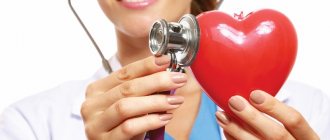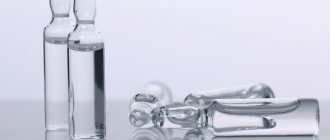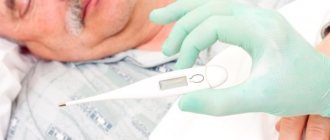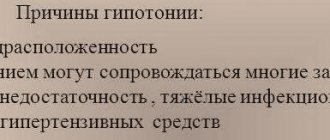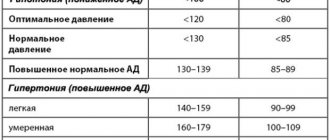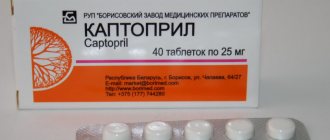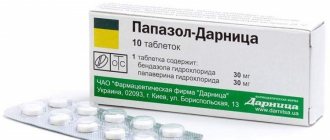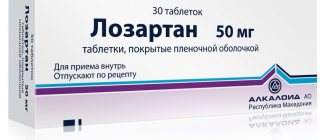Hypertensive crisis is an acute cerebrovascular accident associated with a sharp increase in blood pressure.
As a rule, the cause is hypertension. As practice shows, it was either not treated, or the treatment was incorrect. Very rarely, but an attack of hypertensive crisis occurs without previous symptoms of hypertension. Provoking factors: stress, overwork, heavy physical activity, stopping medications and refusing a diet with limited consumption of table salt, drinking alcohol, sudden changes in temperature (for example, in a bathhouse), etc.
Symptoms of a hypertensive crisis:
- increase in diastolic blood pressure above 110-120 mm Hg.
- sharp headache, usually in the back of the head
- sensation of pulsation in the temples
- shortness of breath (due to increased load on the left ventricle of the heart)
- nausea or vomiting
- visual impairment (flickering “fly spots” before the eyes), possible partial loss of visual fields
- redness of the skin
- possible occurrence of compressive pain behind the sternum
- excitement, irritability
First aid for hypertensive crisis
First of all, if you suspect a hypertensive crisis, you need to measure your blood pressure. It should be raised. Pressure is measured using a tonometer, which is usually found in the home of hypertensive patients. If you suspect a hypertensive crisis, immediately call an ambulance, because emergency hospitalization of the patient may be required (remember that the process develops quickly).
Sequence and principles of first aid:
- Call an ambulance
- Calm the person down (excitement only increases blood pressure);
- Put him in bed and give him a semi-sitting position;
- Make sure that the patient breathes evenly and deeply;
- Apply a cold heating pad or compress to your head;
- Provide access to oxygen (open the window, unbutton your clothes);
- Give an antihypertensive drug that the patient had previously taken or put a captopril tablet under the tongue (or Corinfar, Capoten, nifedipine, Cordaflex), if after half an hour there is no improvement, then you can take the drug from the list again, but, in general, not more than 2 times!
- Drip tincture of motherwort or valerian, Corvalol;
- To combat the feeling of cold and chills, cover the patient with warm heating pads;
- If chest pain occurs, you should take nitroglycerin.
If a nosebleed occurs, you need to pinch your nose for five minutes and apply a cold compress to the bridge of your nose (do not tilt your head back).
It is important to know that at the time of a hypertensive crisis, patients often experience a strong feeling of fear. This is due to a sharp release of stress hormones. And your task is not to show unnecessary concern about his condition through your actions or words, and not to panic. Talk calmly, kindly, reassuring the patient and telling him that this condition passes, it is not scary, and the doctor will certainly help.
It is important to remember that you can reduce blood pressure during a hypertensive crisis by no more than 10 mm Hg. per hour to avoid collapse. During the first 2 hours, blood pressure levels can be reduced by 20-25%.
After first aid is provided, medical personnel must act. If blood pressure does not decrease, and the patient’s condition worsens, chest pain and other suspicious symptoms develop, and you have not yet called a team of doctors, then urgently call an ambulance. You can't hesitate!
Measure your blood pressure every 20 minutes, the result will be important for emergency doctors
Sometimes, after receiving medical care, the patient feels better and hospitalization is not required. But in some cases, at the discretion of specialists, urgent treatment in a hospital is necessary, which should not be refused under any circumstances.
Keep in mind that a hypertensive crisis is fraught with various complications: cerebral hemorrhage (stroke), angina pectoris, myocardial infarction, pulmonary edema, etc.
Remember that the well-being of the further outcome of the disease depends on your first actions.
Hypertensive crisis. Symptoms and first aid
A hypertensive crisis poses an immediate threat to the patient's life.
What is important to know in order to prevent serious consequences and competently provide first aid in a crisis?
- A hypertensive crisis is an emergency condition that occurs due to a sharp increase in blood pressure, with the development of subjective disorders and objective symptoms of a cerebral (from the nervous system), cardiac (from the cardiovascular system) and autonomic nature.
- A crisis manifests itself as a clinical picture of target organ and requires urgent medical care.
- Contrary to public opinion, a hypertensive crisis does not have characteristic blood pressure numbers; these numbers are purely individual. Sometimes a hypertensive crisis can be the very first manifestation of hypertension.
When a hypertensive crisis occurs, the risk of complications from a number of systems and organs increases, disorders of the central nervous system, heart failure, angina pectoris, myocardial infarction, pulmonary edema, aneurysm, etc. appear.
The rise in blood pressure is caused by two mechanisms:
- vascular
- cardiac
Symptoms of a hypertensive crisis:
- An increase in diastolic blood pressure above 110-120 mm Hg.
- A sharp headache, usually in the back of the head.
- Feeling of pulsation in the temples.
- Shortness of breath (due to increased load on the left ventricle of the heart).
- Nausea or vomiting.
- Visual impairment (flickering “flies” before the eyes), possible partial loss of visual fields.
- Redness of the skin.
- Compressive pain behind the sternum may occur.
- Excitement, irritability.
There are two types of crises:
- The first type of crisis (hyperkinetic) is observed mainly in the early stages of arterial hypertension. Characterized by an acute onset, a predominant increase in systolic blood pressure, increased heart rate, and an abundance of “vegetative signs.”
- A crisis of the second type (hypokinetic) usually develops in the later stages of the disease, against the background of high blood pressure. Characterized by gradual development (from several hours to 4–5 days) and severe course, with cerebral and cardiac symptoms.
First aid for hypertensive crisis:
- Lay the patient down (with the head end elevated).
- Create complete physical and mental peace.
- Monitor blood pressure and heart rate every 15 minutes until the doctor arrives.
- Given the need for emergency care and immediate administration of drugs that lower blood pressure, treatment begins immediately (at home, on the street, in an ambulance, in the hospital emergency room). Often the patient himself has a drug with him that he uses to lower blood pressure.
- To effectively stop a crisis, captopril can be used, especially if there is a history of cardiosclerosis, heart failure, or diabetes mellitus.
- If tachycardia is observed against the background of high blood pressure, drugs from the group of non-selective beta-blockers (propranolol) are recommended.
- Nifedipine is recommended for use during pregnancy, with concomitant pathology of the kidneys and bronchopulmonary system.
- Distraction procedures:
- mustard plasters on the back of the head, on the lower back, to the legs;
- cold to the head with severe headaches;
- hot foot baths.
- Usually the patient himself already knows which medications to take in case of a sharp increase in blood pressure.
! Remember that you can reduce blood pressure during a hypertensive crisis by no more than 10 mmHg. per hour to avoid the development of collapse (a life-threatening condition with a sharp drop in blood pressure and deterioration of blood supply to vital organs).
During the first 2 hours, blood pressure levels can be reduced by no more than 20 - 25%.
Important! When a hypertensive crisis occurs for the first time in life or its course is complicated, the patient needs urgent hospitalization.
- Target organs for arterial hypertension
Valeologist of the prevention department M. Vereshchagina
Symptoms of hypertensive crisis
This condition can be assumed based on the following symptoms;
- a sharp increase in blood pressure (depending on the person’s condition, the presence of complications and concomitant diseases);
- tachycardia;
- shooting pain in the occipital region of a pressing, squeezing or bursting nature; often accompanied by a sensation of pulsation;
- dizziness;
- unsteady gait;
- nausea, vomiting;
- dyspnea.
In case of complications or lack of first aid, fainting and even coma are possible.
Hypertensive crisis - symptoms and treatment, emergency care
By such an acute condition, doctors understand a sharp rise in blood pressure. Indicators can be significantly increased and amount to 240 to 120 mm of mercury. The patient feels unwell. He may experience:
- ringing appears in the ears;
- headache;
- vomiting or nausea;
- redness of the facial skin;
- legs and arms tremble;
- thirst;
- fast heart rate;
- spots in the eyes.
If such symptoms appear, emergency assistance is required. Most often, a crisis occurs in people with diseases that accompany hypertension. But sometimes it is diagnosed in those who did not have hypertension before. The following can contribute to the appearance of HA:
- menopause;
- hypertension;
- kidney diseases;
- lupus erythematosus;
- nephropathy in pregnant women,
- Itsenko-Cushing's disease;
- pheochromocytoma.
But sometimes this condition is provoked by too strong experiences, stress, tension, weather dependence, drinking alcohol, consuming large amounts of salty food. Despite the different reasons, the mechanism is the same, the regulation of vascular tone is disrupted.
It must be said that the manifestations of GC may differ and depend on the form of the disease. These include:
- water-salt;
- more dangerous – convulsive;
- neurovegetative.
Emergency care should always be prompt.
Mechanism of development and causes of hypertensive crisis
It may appear as follows:
- Short-term and unexpected manifestation of the following symptoms: pain in the temporal and other areas of the head, difficulty breathing, high blood pressure.
- Increased pressure, discomfort or pain in the heart and occipital area, extraneous noise in the ears.
The causes of hypertensive crisis are divided into two groups. In the first:
- diseases of the brain and cervical spine of any origin;
- pathologies of the cardiovascular system: coronary disease, atherosclerosis, arterial hypertension, heart failure;
- diseases of the endocrine system (hyperthyroidism, diabetes, etc.);
- respiratory tract diseases (bronchial asthma);
- pathologies of the kidneys and urinary system (pyelonephritis, glomerulonephritis, etc.).
The second group (trigger) risk factors include:
- stress;
- physical fatigue;
- taking tonic medications;
- smoking;
- alcohol consumption;
- acute attack of angina.
Men are more predisposed to hypertensive crisis than women, especially over the age of 50-55 years.
Treatment of hypertensive crisis
Therapy for a hypertensive crisis includes non-drug treatment methods and drug assistance.
First aid
When recording blood pressure readings that are different from the norm and accompanying signs, it is necessary to provide first aid: lay the person horizontally, turn the head to the side, unbutton the top buttons on the clothes and free the neck, ensure a flow of fresh air, call an ambulance.
You can reduce blood pressure with medications prescribed by your doctor in an individual case.
Non-drug treatment
Therapy begins with changing the patient's lifestyle. Rehabilitation consists of eliminating the causes of hypertensive crisis. The patient is advised to take a vacation, visit a psychologist, change his diet, eliminate bad habits, reduce or add gentle physical activity, etc.
In a hospital, a patient may be prescribed a course of physiotherapy, massage and exercise therapy, or sanatorium-resort treatment.
Drug treatment
Drug treatment, selected individually by a doctor, is aimed at restoring heart rhythm and functions of the cardiovascular system.
The following are used as symptomatic therapy:
- diuretics;
- angiotensin-converting enzyme inhibitors;
- β-blockers;
- calcium channel blockers;
- sedatives.
It is necessary to take medications gradually under the supervision of a doctor to avoid a sharp increase or decrease in blood pressure.
Other treatments
The patient can undergo rehabilitation after a hypertensive crisis in the absence of contraindications: sessions of vitamin therapy, acupuncture, balneotherapy, a course of relaxation, air and sun baths, electrosleep, swimming pool, etc.
